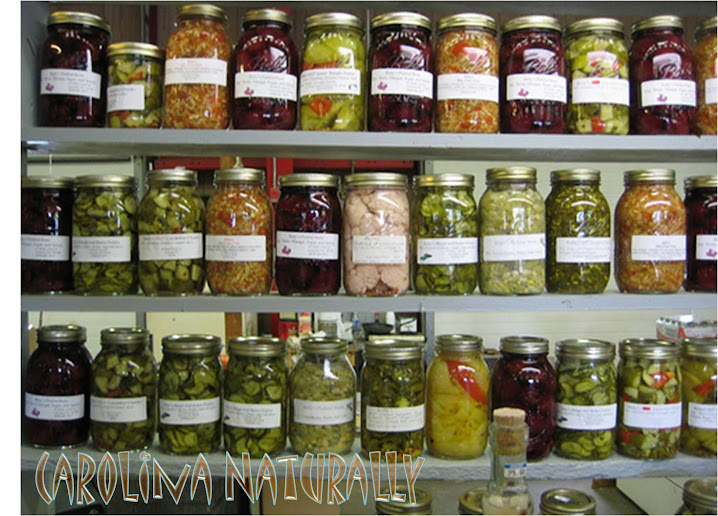Before Stonehenge
One long-ago day around 3200 B.C., the farmers and herdsmen on Scotland’s remote Orkney Islands decided to build something big...
by Roff Smith

They had Stone Age technology, but their vision was millennia
ahead of their time. Five thousand years ago the ancient inhabitants of
Orkney—a fertile, green archipelago off the northern tip of modern-day
Scotland—erected a complex of monumental buildings unlike anything they
had ever attempted before.
They quarried thousands of tons of fine-grained sandstone, trimmed
it, dressed it, then transported it several miles to a grassy
promontory with commanding views of the surrounding countryside. Their
workmanship was impeccable. The imposing walls they built would have
done credit to the Roman centurions who, some 30 centuries later, would
erect Hadrian’s Wall in another part of Britain.
Cloistered within those walls were dozens of buildings, among them
one of the largest roofed structures built in prehistoric northern
Europe. It was more than 80 feet long and 60 feet wide, with walls 13
feet thick. The complex featured paved walkways, carved stonework,
colored facades, even slate roofs—a rare extravagance in an age when
buildings were typically roofed with sod, hides, or thatch.
Fast-forward five millennia to a balmy summer afternoon on a
scenic headland known as the Ness of Brodgar. Here an eclectic team of
archaeologists, university professors, students, and volunteers is
bringing to light a collection of grand buildings that long lay hidden
beneath a farm field. Archaeologist Nick Card, excavation director with
the Archaeology Institute at the University of the Highlands and
Islands, says the recent discovery of these stunning ruins is turning
British prehistory on its head.
“This is almost on the scale of some of the great classical sites
in the Mediterranean, like the Acropolis in Greece, except these
structures are 2,500 years older. Like the Acropolis, this was built to
dominate the landscape—to impress, awe, inspire, perhaps even intimidate
anyone who saw it. The people who built this thing had big ideas. They
were out to make a statement.”
What that statement was, and for whom it was intended, remains a
mystery, as does the purpose of the complex itself. Although it’s
usually referred to as a temple, it’s likely to have fulfilled a variety
of functions during the thousand years it was in use. It’s clear that
many people gathered here for seasonal rituals, feasts, and trade.
The discovery is all the more intriguing because the ruins were
found in the heart of one of the densest collections of ancient
monuments in Britain. The area has been searched for the past 150 years,
first by Victorian antiquarians, later by archaeologists. Yet none of
them had the slightest idea what lay beneath their feet.
Stand at “the Ness” today and several iconic Stone Age structures
are within easy view, forming the core of a World Heritage site called
the Heart of Neolithic Orkney. On a heather-clad knoll half a mile away
rises a giant Tolkienesque circle of stones known as the Ring of
Brodgar. A second ceremonial stone circle, the famous Stones of
Stenness, is visible across the causeway leading up to the Ness. And one
mile away is an eerie mound called Maes Howe, an enormous chambered
tomb more than 4,500 years old. Its entry passage is perfectly aligned
to receive the rays of the setting sun on the eve of the winter
solstice, illuminating its inner chamber on the shortest day of the
year.
Maes Howe also aligns with the central axis and entrance to the
newly discovered temple on the Ness, something archaeologists believe is
no coincidence. They suspect that the freshly uncovered ruins may be a
key piece to a larger puzzle no one dreamed existed.
Until as recently as 30 years ago, the Ring of Brodgar, the Stones
of Stenness, and the Maes Howe tomb were seen as isolated monuments
with separate histories. “What the Ness is telling us is that this was a
much more integrated landscape than anyone ever suspected,” says Card.
“All these monuments are inextricably linked in some grand theme we can
only guess at. And the people who built all this were a far more complex
and capable society than has usually been portrayed.”
Orkney has long been good to archaeologists, thanks to its
deep human history and the fact that nearly everything here is built of
stone. Literally thousands of sites are scattered through the islands,
the majority of them untouched. Together they cover a great sweep of
time and settings, from Mesolithic camps and Iron Age settlements to the
remains of Old Norse feasting halls and ruined medieval palaces.
“I’ve heard this place called the Egypt of the North,” says county
archaeologist Julie Gibson, who came to Orkney more than 30 years ago
to excavate a Viking cemetery and never left. “Turn over a rock around
here and you’re likely to find a new site.”
Sometimes you don’t even need to do that. In 1850 a gale tore away
some sand dunes along the Bay of Skaill, on the western flank of
Mainland island, exposing an astonishingly well preserved Stone Age
village. Archaeologists date the village, called Skara Brae, to around
3100
B.C. and believe it was occupied for more than 600 years.
Skara Brae must have been a cozy setup in its day. Lozenge-shaped
stone dwellings linked by covered passages huddled close together
against the grim winters. There were hearths inside, and the living
spaces were furnished with stone beds and cupboards. Even after the
passage of thousands of years the dwellings look appealingly personal,
as though the occupants had just stepped out. The stage-set quality of
the homesteads and the glimpse they offer into everyday life in the
Neolithic, to say nothing of the dramatic way they were revealed, made
Skara Brae Orkney’s most spectacular find. Until now.
The first hint of big things underfoot at the Ness came to
light in 2002, when a geophysical survey revealed the presence of large,
man-made anomalies beneath the soil. Test trenches were dug and
exploratory excavations begun, but it wasn’t until 2008 that
archaeologists began to grasp the scale of what they had stumbled upon.
Today only 10 percent of the Ness has been excavated, with many
more stone structures known to be lurking under the turf nearby. But
this small sample of the site has opened an invaluable window into the
past and yielded thousands of priceless artifacts: ceremonial mace
heads, polished stone axes, flint knives, a human figurine, miniature
thumb pots, beautifully crafted stone spatulas, colored pottery far more
refined and delicate than anyone had expected for its time, and more
than 650 pieces of Neolithic art, by far the largest collection ever
found in Britain.
Before visiting the Ness, I tended to view Stone Age sites with
indifferent curiosity. The lives of the long-ago inhabitants seemed far
removed and alien. But art offers a glimpse into the minds and
imaginations of the people who create it. At the Ness I found myself
looking into a world I could comprehend, even if its terms were
radically different from my own.
“Nowhere else in all Britain or Ireland have such well-preserved
stone houses from the Neolithic survived, so Orkney is already punching
above its weight,” says Antonia Thomas, an archaeologist at the
University of the Highlands and Islands. “To be able to link these
structures with art, to see in such a direct and personal way how people
embellished their surroundings, is really something.”
One of the more startling discoveries has been discernible traces
of colored pigments on some of the stonework. “I’ve always suspected
that color played an important role in people’s lives,” says Card. “I
had a sense that they painted their walls, but now we know for sure.”
Indeed one of the structures apparently served as a kind of paint
shop, complete with piles of pigment still on the floor: powdered
hematite (red), ocher (yellow), and galena (white), together with the
dimpled rocks and grinding stones that served as mortar and pestle.
Also found among the ruins were prized trade goods such as
volcanic glass from as far afield as the Isle of Arran in western
Scotland, and high-quality flints from across the archipelago and
beyond. These artifacts suggest that Orkney was on an established trade
route and that the temple complex on the Ness may have been a site of
pilgrimage.
More intriguing than the items traders and pilgrims brought to the
site, say archaeologists, is what they took away: ideas and
inspiration. Distinctive colored pottery sherds found at the Ness and
elsewhere, for example, suggest that the trademark style of grooved
pottery that became almost universal throughout Neolithic Britain had
its origin in Orkney. It may well be that rich and sophisticated
Orcadians were setting the fashion agendas of the day.
“This is totally at odds with the old received wisdom that
anything cultural must have come from the genteel south to improve the
barbarian north,” laughs Roy Towers, a Scottish archaeological
ceramicist and the site’s pottery specialist. “It seems to have been
just the reverse here.”
Traders and pilgrims also returned home with recollections of the
magnificent temple complex they had seen and notions about celebrating
special places in the landscape the way the Orcadians did—ideas which,
centuries later, would find their ultimate expression at Stonehenge.
Why Orkney of all places? How did this scatter of islands
off the northern tip of Scotland come to be such a technological,
cultural, and spiritual powerhouse? “For starters, you have to stop
thinking of Orkney as remote,” says Caroline Wickham-Jones, a lecturer
in archaeology at the University of Aberdeen. “For most of history, from
the Neolithic to the Second World War, Orkney was an important maritime
hub, a place that was on the way to everywhere.”
It was also blessed with some of the richest farming soils in
Britain and a surprisingly mild climate, thanks to the effects of the
Gulf Stream. Pollen samples reveal that by about 3500
B.C.—around
the time of the earliest settlement on Orkney—much of the hazel and
birch woodland that originally covered the landscape was gone.
“It’s been assumed that the woodland was cleared away by Neolithic
farmers, but that doesn’t seem to have been entirely the case,” says
Michelle Farrell, a paleoecologist at Queen’s University Belfast who
studies past land use and environmental change. “Although early farmers
accounted for a degree of woodland loss, in some areas much of the
woodland was already gone by 5500
B.C.
It seems to have been a prolonged event and largely caused by natural
processes, but what those processes were we really can’t say without
better climate records.”
One thing is certain, says Farrell: “The open nature of the
landscape would have made life much easier for those early farmers. It
could have been one of the reasons why they were able to devote so much
time to monument building.”
It’s also clear that they had plenty of willing hands and strong
backs to put to the cause. Estimates of Orkney’s population in Neolithic
times run as high as 10,000—roughly half the number of people who live
there today—which no doubt helps account for the density of
archaeological sites in the islands. Unlike other parts of Britain,
where houses were built with timber, thatch, and other materials that
rot away over time, Orcadians had abundant outcrops of fine, easily
worked sandstone for building homes and temples that could last for
centuries.
What’s more, the Neolithic homesteaders and pioneers who settled
Orkney knew what they were doing. “Orkney’s farmers were among the first
in Europe to have deliberately manured their fields to improve their
crops,” says Jane Downes, director of the Archaeology Institute at the
University of the Highlands and Islands. “Thousands of years later
medieval peasants were still benefiting from the work those Neolithic
farmers put into the soil.”
They also imported cattle, sheep, goats, and possibly red deer,
ferrying them out from the Scottish mainland in skin boats, braving
miles of open water and treacherous currents. The herds they raised grew
fat on the island’s rich grazing. Indeed, to this day, Orkney beef
commands a premium on the market.
In short, by the time they embarked on their ambitious building
project on the Ness of Brodgar, Orkney’s farmers had become wealthy and
well established, with much to be grateful for and a powerful spiritual
bond to the land.
For a thousand years, a span longer than Westminster Abbey
and Canterbury Cathedral have stood, the temple complex on the Ness of
Brodgar cast its spell over the landscape—a symbol of wealth, power, and
cultural energy. To generations of Orcadians who gathered there, and to
the travelers who came hundreds of miles to admire it and conduct
business, the temple and its walled compound of buildings must have
seemed as enduring as time itself.
But sometime around the year 2300
B.C.,
for reasons that remain obscure, it all came to an end. Climate change
may have played a role. Evidence suggests that northern Europe became
cooler and wetter toward the end of the Neolithic, and these conditions
may have had a negative effect on agriculture.
Or perhaps it was the disruptive influence of a new toolmaking
material: bronze. Not only did the metal alloy introduce better tools
and weapons. It also brought with it fresh ideas, new values, and
possibly a shake-up of the social order.
“We’ve not found any bronze artifacts so far on the Ness,” says
Card. “But a society as powerful and well connected as they were must
surely have known that profound changes were coming their way. It may
have been they were one of the holdouts.”
Whatever the reason, the ancient temple was decommissioned and
partially destroyed, deliberately and symbolically. Before the people
moved on, they left behind one final startling surprise for
archaeologists to find: the remains of a gargantuan farewell feast. More
than 400 cattle were slaughtered, enough meat to have fed thousands of
people.
“The bones all appear to have come from a single event,” says
Ingrid Mainland, an archaeozoologist from the University of the
Highlands and Islands who specializes in ancient livestock. She has been
analyzing the piles of bones that were deliberately arranged around the
temple. Curiously, the people who ate that final feast left behind only
the shinbones of the animals they slaughtered. “What the significance
of the tibia was to them, where that fits in the story, is a mystery,”
says Mainland.
Another unknown is what impact killing so many cattle may have had
on this agricultural community. “Were they effectively taking out the
future productivity of their herds?” wonders Mainland. “We don’t know.”
After cracking open the bones to extract the rich marrow inside,
the people arranged them in intricate piles around the base of the
temple. Next they draped unbutchered deer carcasses over the piles,
presumably as offerings. In the center of the chamber they deposited a
cattle skull and a large stone engraved with a sort of cup motif. Then
came the final act of closure.
“They deliberately demolished the buildings and buried them under
thousands of tons of rubble and trash,” says Card. “It seems that they
were attempting to erase the site and its importance from memory,
perhaps to mark the introduction of new belief systems.”
Over the centuries that followed the abandonment of the Ness, time
and the elements took their toll. Whatever stones remained visible from
the old forgotten walls were carried away by homesteaders for use in
their own cottages and farms. Now it was their turn to play out their
history on Orkney’s windswept stage.

























